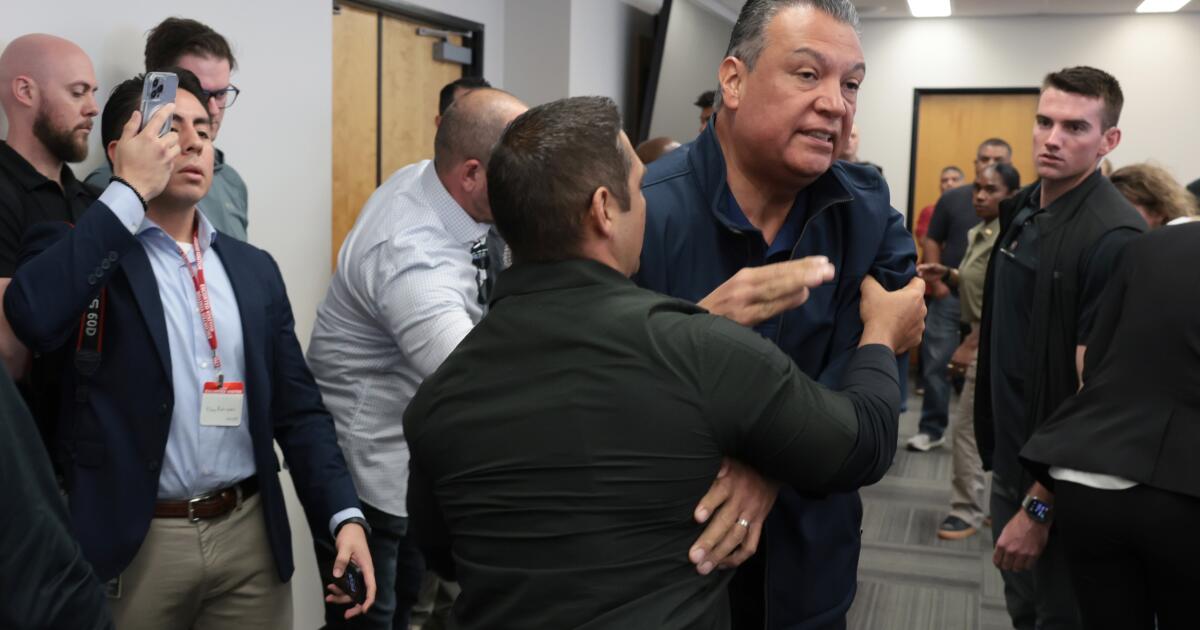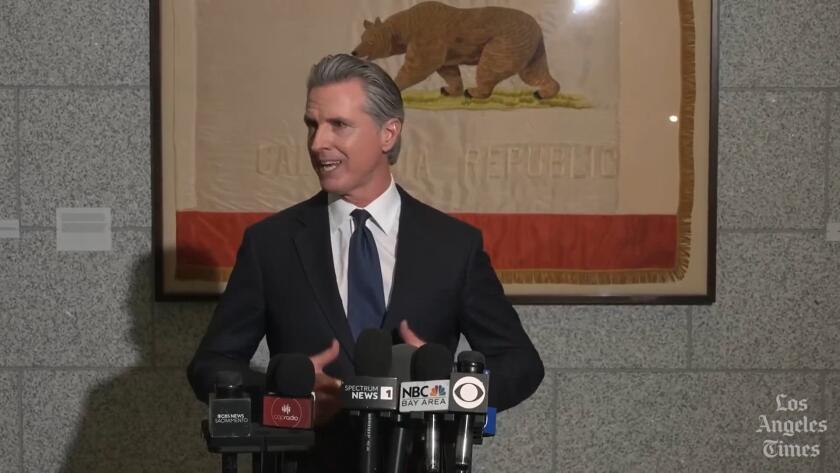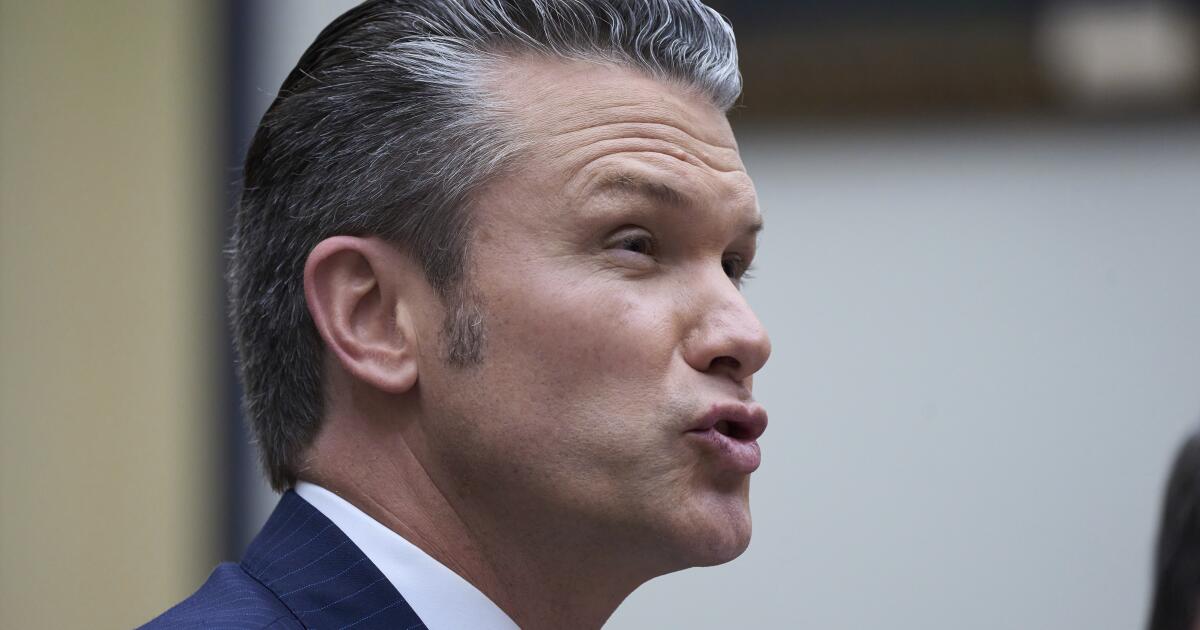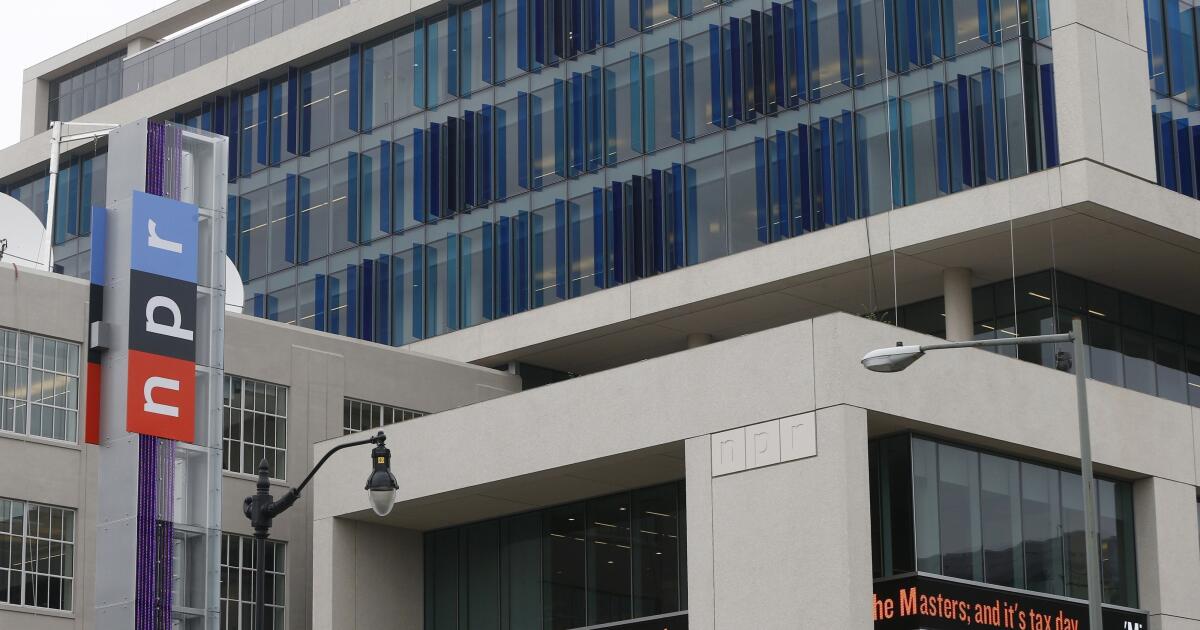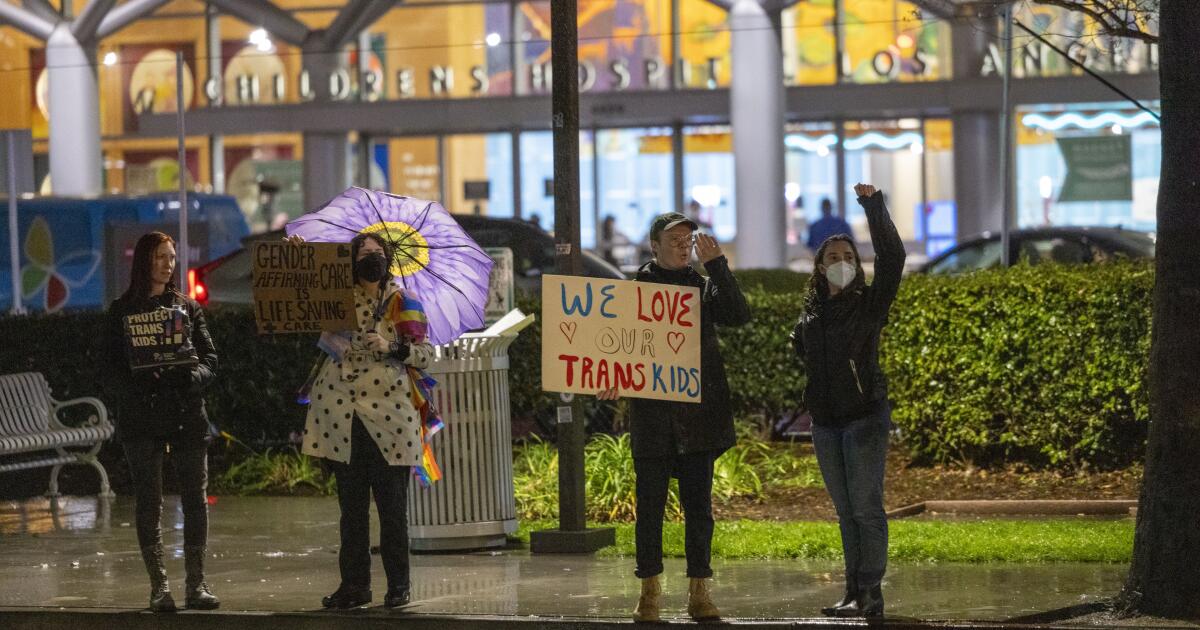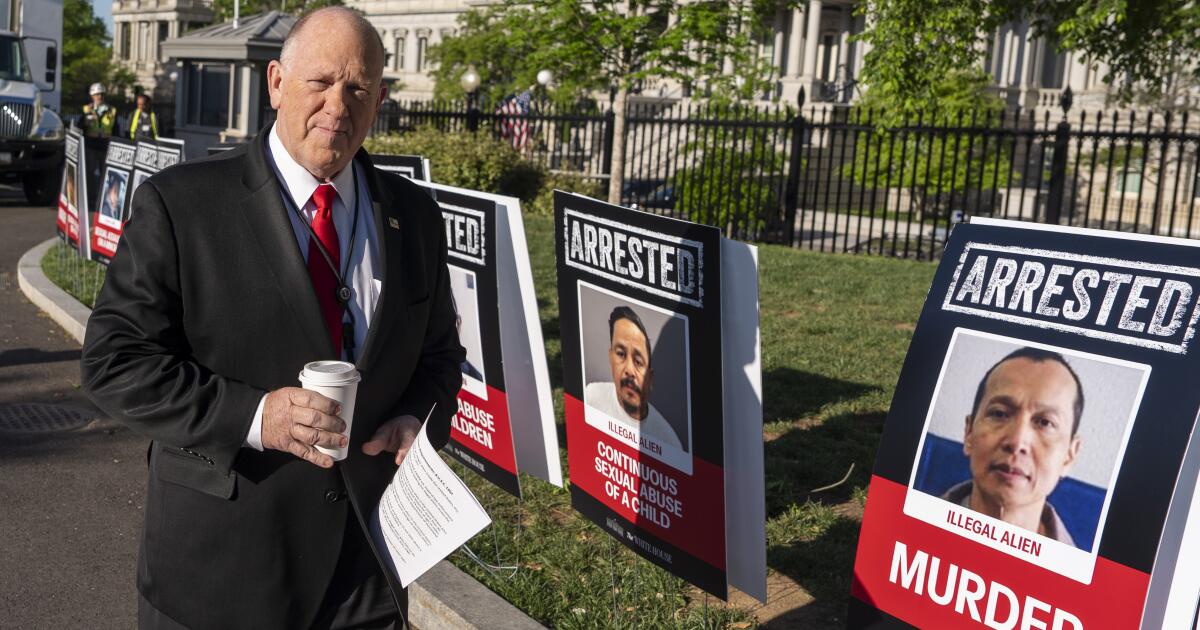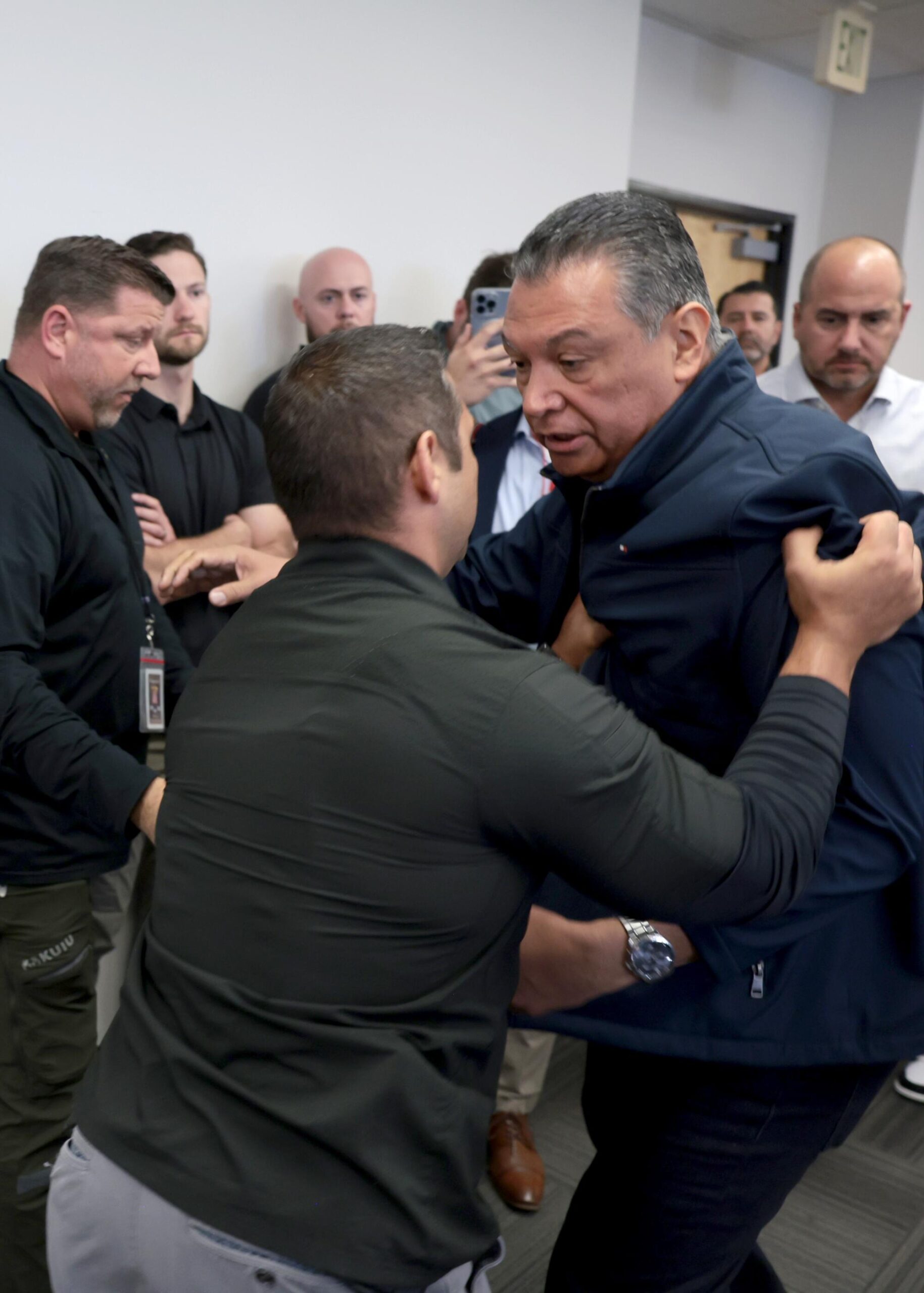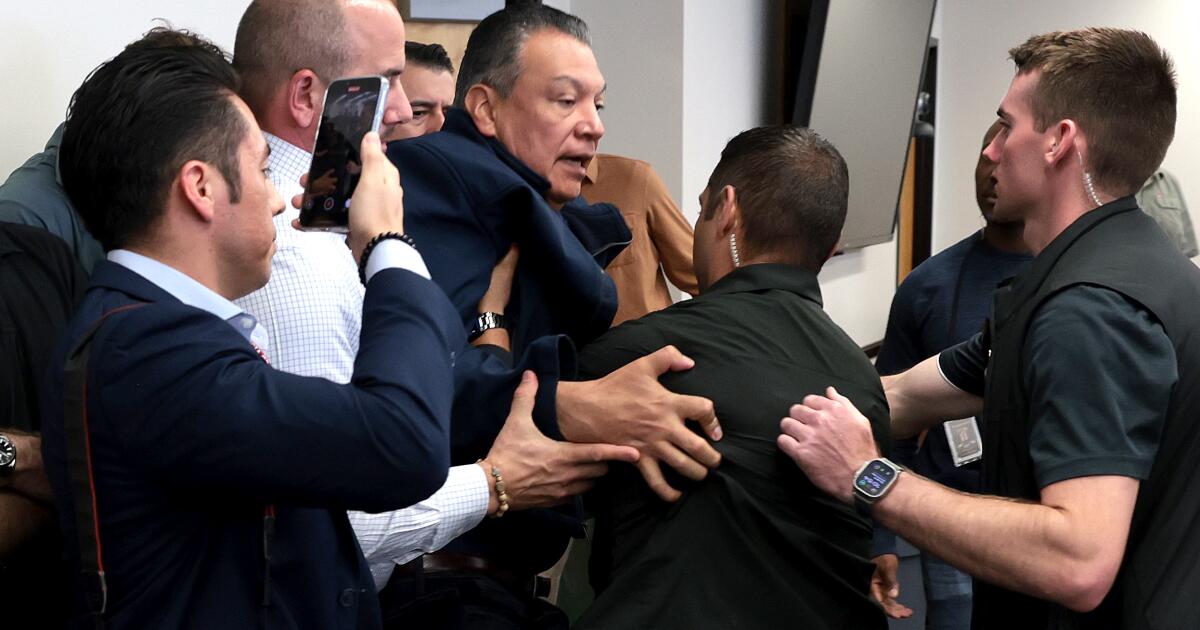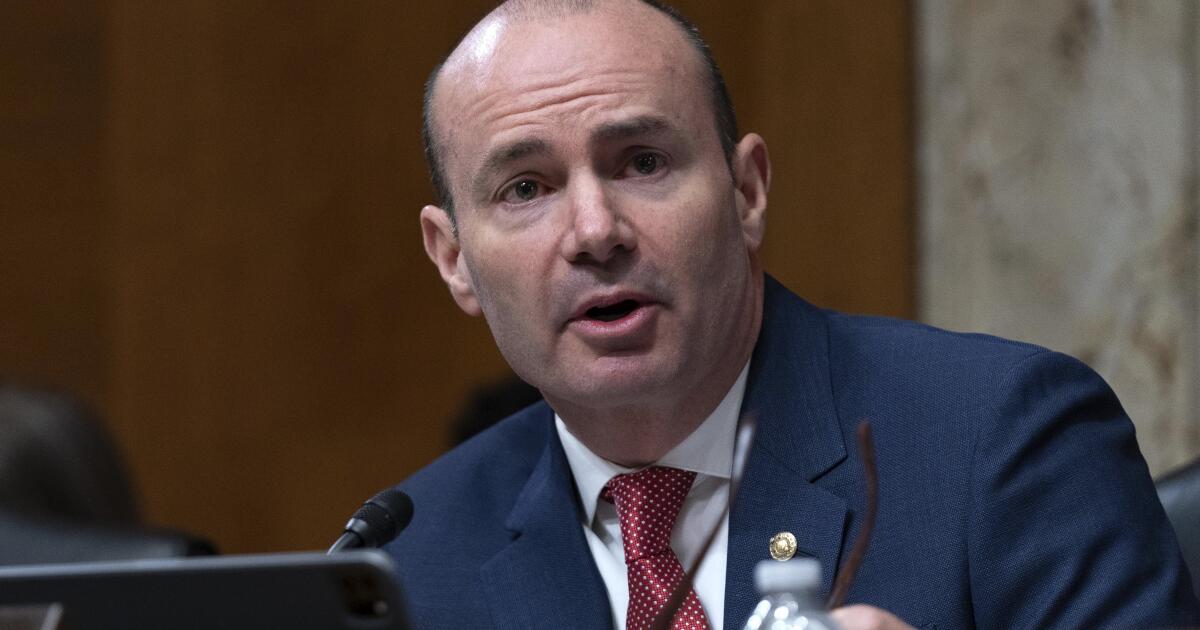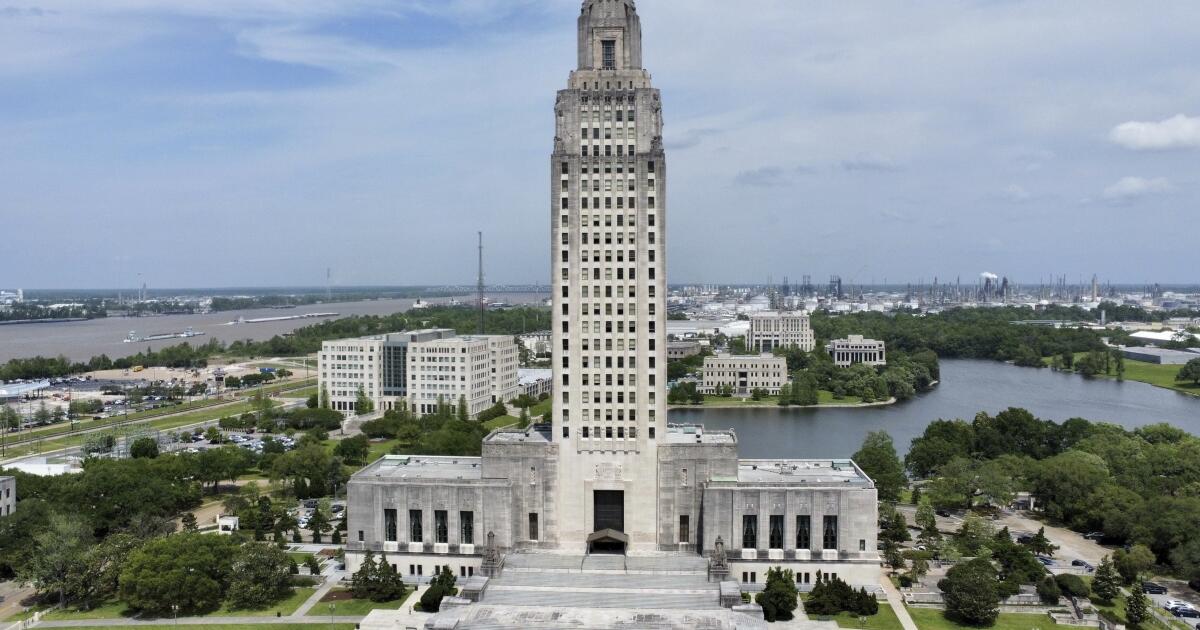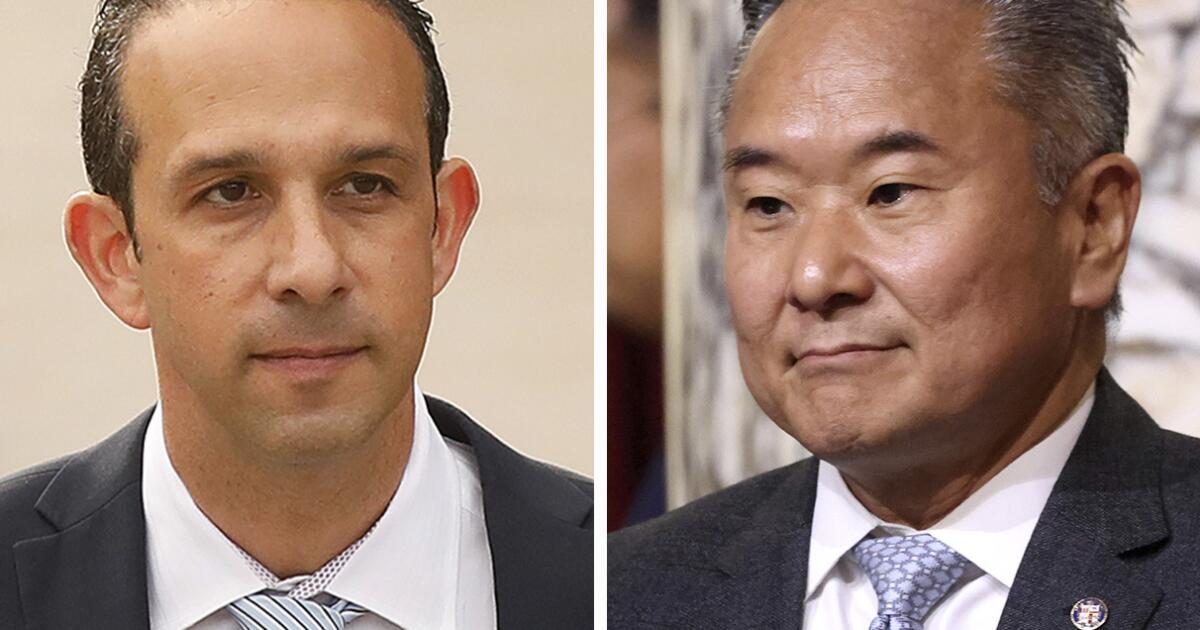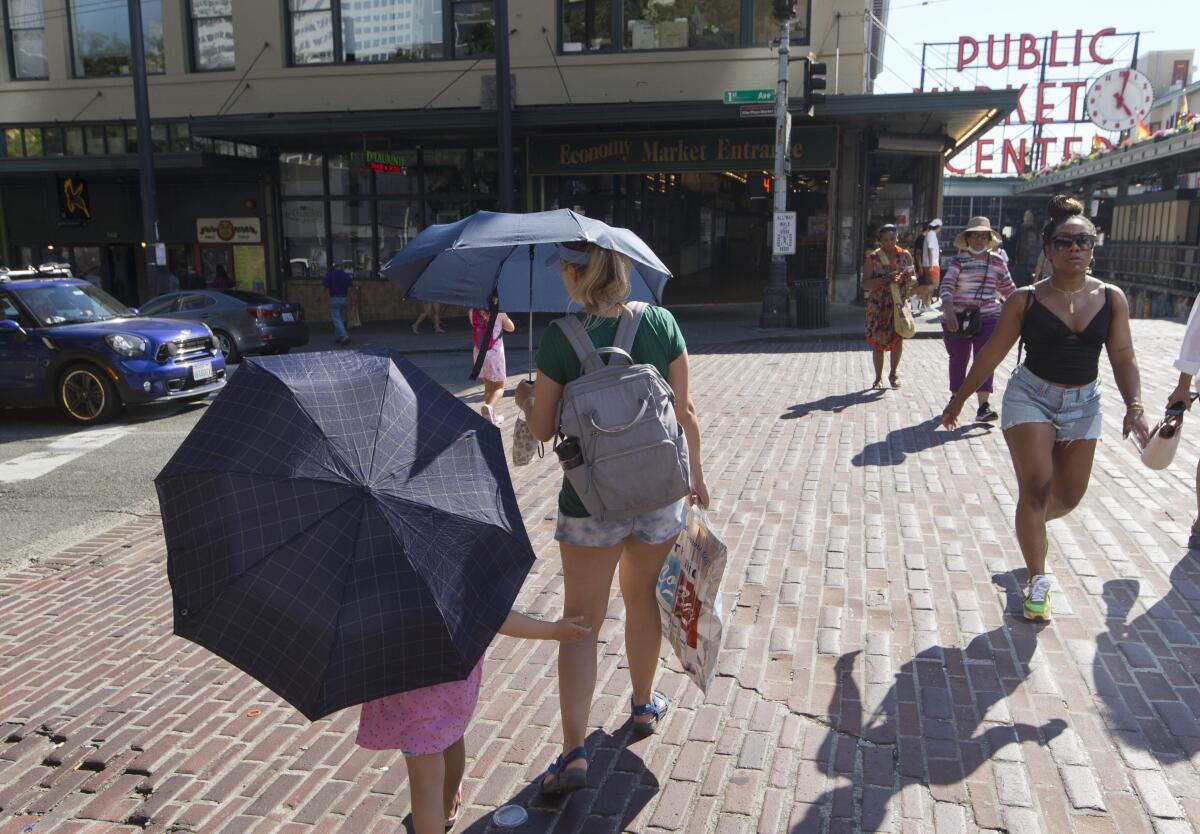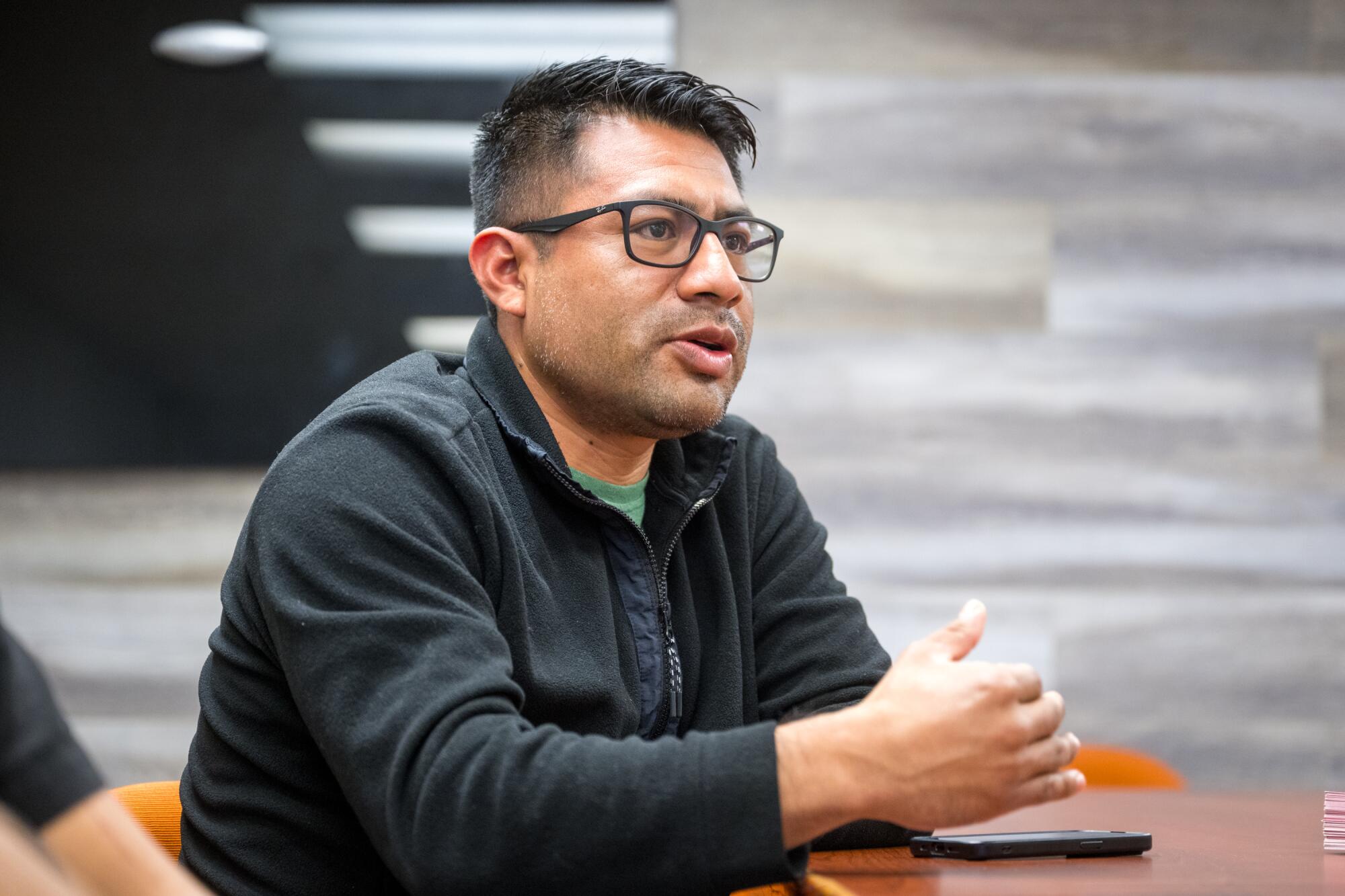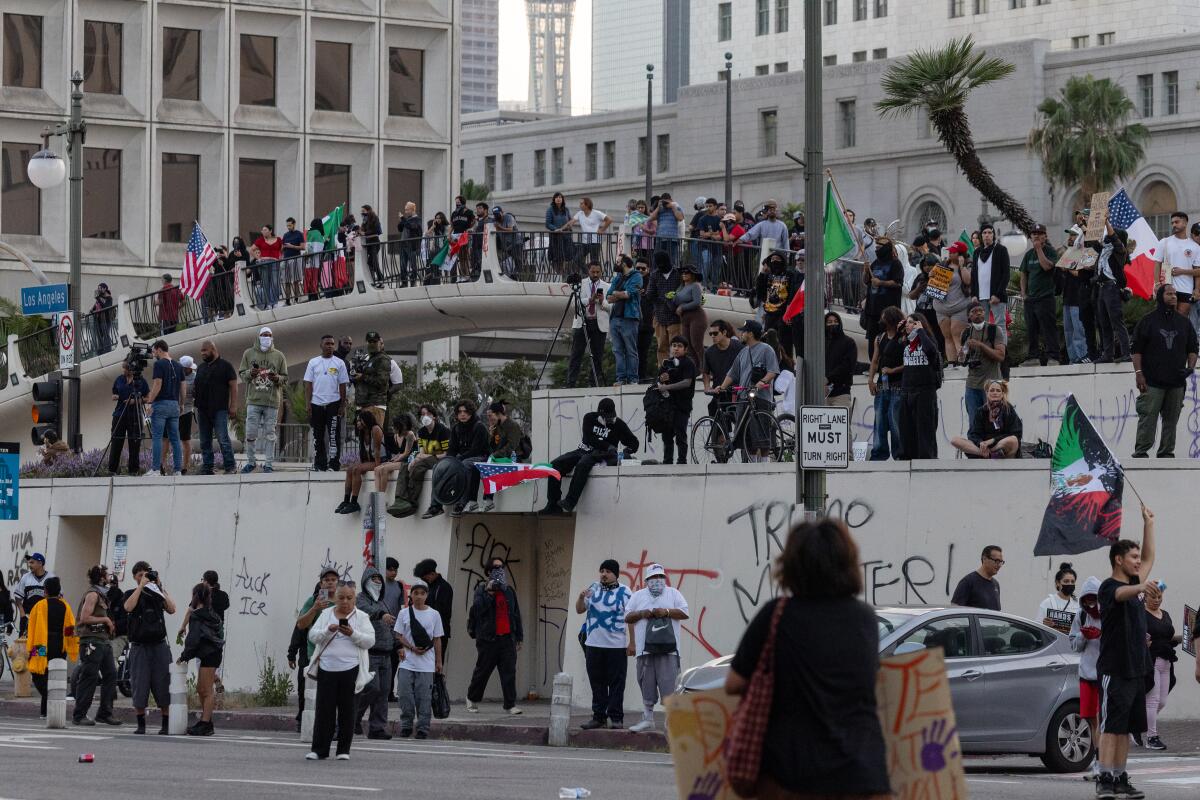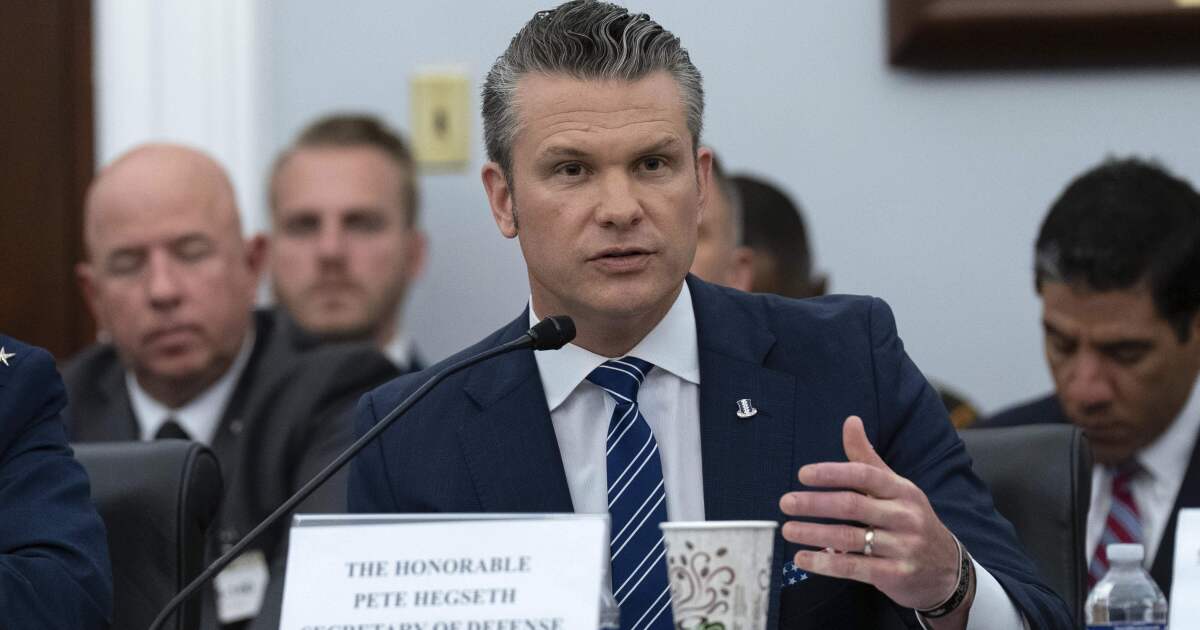State sues SoCal real estate tycoon, alleging widespread tenant exploitation
Alleging widespread and egregious violations of housing and tenant laws, Atty. Gen. Rob Bonta sued Southern California real estate tycoon Mike Nijjar in Los Angeles County Superior Court on Thursday.
In the lawsuit, Bonta accused Nijjar, family members and their companies of subjecting tenants to vermin infestations and overflowing sewage, overcharging them and violating anti-discrimination laws.
The suit says that Nijjar is one of California’s largest landlords, operating multibillion dollars in holdings. Nijjar family companies, commonly known as PAMA Management, own 22,000 rental units, primarily in low-income neighborhoods in Southern California.
The suit follows a more than two-year California Department of Justice investigation into Nijjar’s holdings, Bonta said.
“PAMA and the companies owned by Mike Nijjar and his family are notorious for their rampant, slum-like conditions — some so bad that residents have suffered tragic results,” Bonta said in a statement. “Our investigation into Nijjar’s properties revealed PAMA exploited vulnerable families, refusing to invest the resources needed to eradicate pest infestations, fix outdated roofs and install functioning plumbing systems, all while deceiving tenants about their rights to sue their landlord and demand repairs.”
Bonta is seeking penalties against Nijjar and his family business entities, restitution for tenants, disgorgement of ill-gotten gains and injunctive relief barring Nijjar and PAMA from continuing unlawful business practices.
A representative for Nijjar said he forcefully rejects the claims in the lawsuit.
“The allegations in the complaint are false and misleading, and its claims are legally erroneous,” Nijjar attorney Stephen Larson said in a statement. “We look forward to demonstrating in court that Mr. Nijjar and his companies are not only compliant with the law, but they provide an extraordinary service to housing those disadvantaged and underserved by California’s public and private housing markets.”
Nijjar’s real estate empire has long been on authorities’ radar.
In 2020, LAist detailed wide-ranging dangerous conditions at Nijjar’s properties dating back years, including a fire at a PAMA-owned mobile home in Kern County that resulted in the death of an infant. The mobile home was not permitted for human occupancy, according to the report and Bonta’s lawsuit. Two years later, The Times wrote a series of stories about Chesapeake Apartments, a sprawling 425-unit apartment complex in South L.A., where Nijjar’s tenants complained of sewage discharges, regular mold and vermin infestations and shoddy repairs. Chesapeake had the most public health violations of any residential property in L.A. County over the previous five years, according to a Times analysis at the time.
Prior attempts at accountability for Nijjar and his companies have been spotty and ineffective. After the 2016 mobile home fire that killed the infant in Kern County, the California Department of Real Estate revoked the licenses associated with Nijjar’s company at the time. In response, Nijjar and family members reorganized their business structure, the suit said.
The L.A. city attorney’s office resolved a nuisance abatement complaint against PAMA at Chesapeake in 2018, only for the widespread habitability problems to emerge. A similar case filed by the city attorney’s office against a PAMA property in Hollywood remains in litigation more than three years after it was filed. In the meantime, Nijjar’s companies have settled multiple habitability lawsuits filed by residents.
Bonta said that PAMA has taken advantage of lax and piecemeal accountability efforts and its low-income tenants’ vulnerability. Most residents, he said, have low or fixed incomes with few alternatives other than to endure the shoddy conditions in their rentals.
The lawsuit alleges that the habitability problems at PAMA properties are “ongoing business practices” — the result of decisions to make cheap repairs rather than necessary investments in maintenance, the use of unskilled handymen, lack of staff training and failure to track tenant requests.
“Nijjar and his associates have treated lawsuit after lawsuit and code violation after code violation as the cost of doing business and have been allowed to operate and collect hundreds of millions of dollars each year from families who sleep, shower, and feed their children in unhealthy and deplorable conditions,” Bonta said. “Enough is enough.”
Besides tenants’ living conditions, the suit alleges Nijjar and PAMA have induced residents into deceptive leases, discriminated against tenants on public assistance programs and issued unlawful rent increases.
The suit contends PAMA’s leases attempt to invalidate rights guaranteed under law, including the opportunity to sue and make repairs the landlord neglected and deduct these costs from the rent. The company has told Section 8 voucher holders that there are no units available when others are being rented to applicants without vouchers, the complaint said.
The case alleges that PAMA has violated California’s rent cap law on more than 2,000 occasions. The law limits rent increases to 5% plus inflation annually at most apartments. PAMA, the suit says, shifted mandatory shared utility costs, which used to be paid by the landlord, onto tenants’ bills in an attempt to evade the cap. The combination of the new utility costs and rent hikes resulted in total increases of up to 20%, more than double the allowable amount, according to the suit.

